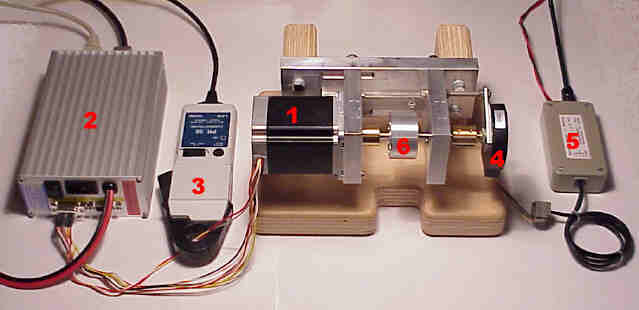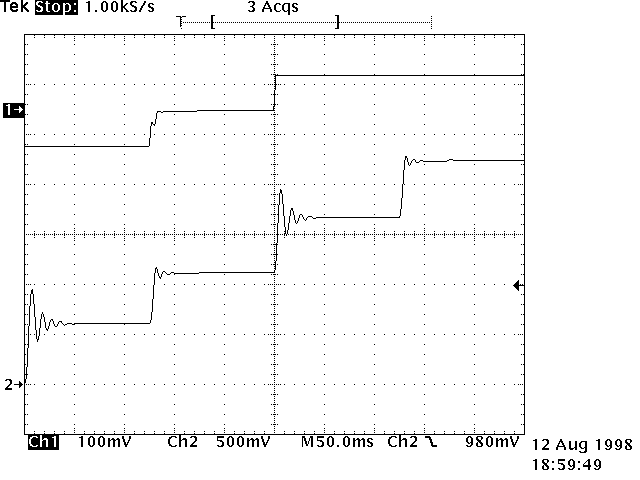 |
No-Name-Motor,
Halbschritt
Motorstrom: 0.75A 72 Vollschritte pro Umdrehung Ohne Last Der
Motor erzeugt starke Vibrationen.
No-Name
motor, Half step mode
The motor makes strong vibrations. |
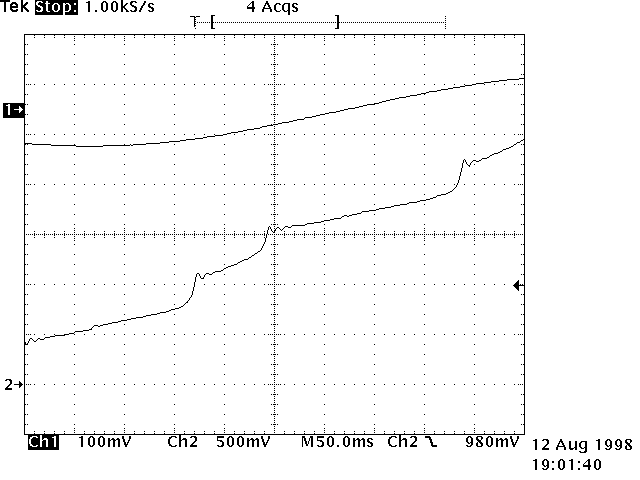 |
No-Name-Motor,
Mikroschritt
Motorstrom: 0.75A 72 Vollschritte pro Umdrehung Ohne Last Der
Motor läuft zwar wesentlich ruhiger als bei Halbschritt-Ansteuerung,
aber die Vibrationen sind nur teilweise beseitigt.
No-Name
motor, Microstep mode
The motor runs smoother than in half step mode but vibrations are not removed completely. A further improvement is possible by a special modification of the current waveform. This is implemented since software version 1.14. For example with this motor the vibrations can be reduced by 50% (not displayed here). |
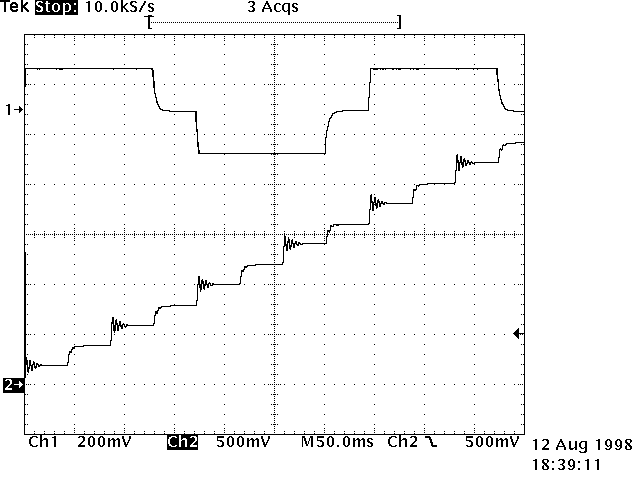 |
ESCAP
PH632 Motor
Halbschritt Motorstrom:
1.80A
Der
Motor erzeugt starke Vibrationen.
ESCAP
PH632 motor
Coil
current: 1.80A
The motor makes strong vibrations. |
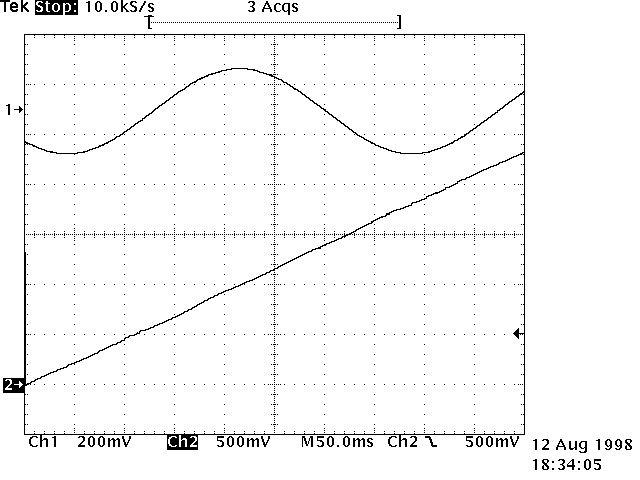 |
ESCAP
PH632 Motor
Mikroschritt Motorstrom:
1.80A
Der
Motor läuft sehr ruhig und gleichmäßig.
ESCAP
PH632 motor
Coil
current: 1.80A
This motor runs very silent and smooth. |
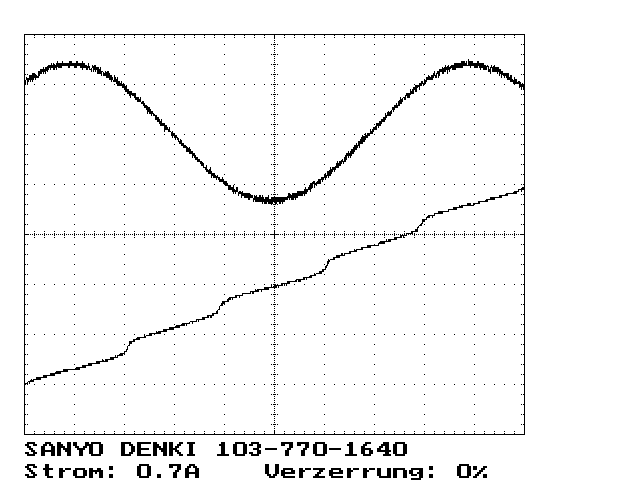 |
SANYO
DENKI 103-770-1640 Motor
Mikroschritt Motorstrom: 0.70A
Der Motor läuft
nicht ganz gleichmässig, aber mit einer verzerrten Srom-Kurvenform
ist eine Verbesserung möglich. Siehe nächstes Bild.
SANYO
DENKI 103-770-1640 motor
Coil current:
0.70A
This motor doesn't run smooth, but it's possible to improve this by modifying the current waveform. See next picture. |
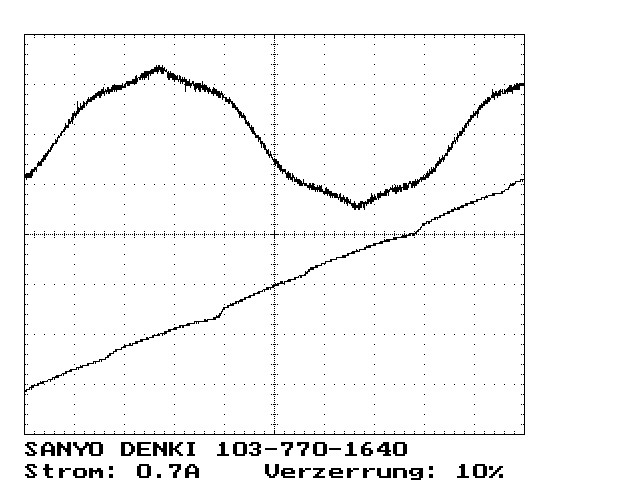 |
SANYO
DENKI 103-770-1640 Motor
Mikroschritt Motorstrom:
0.70A
Durch
die Verzerrung der Strom-Kurvenform läuft der Motor wesentlich gleichmässiger.
Dem Strom wurden 10% der 4. Harmonischen überlagert.
SANYO
DENKI 103-770-1640 motor
Coil
current: 0.70A
The motor runs smoother because the current waveform was modified by adding 10% of the 4th harmonic to the current. |
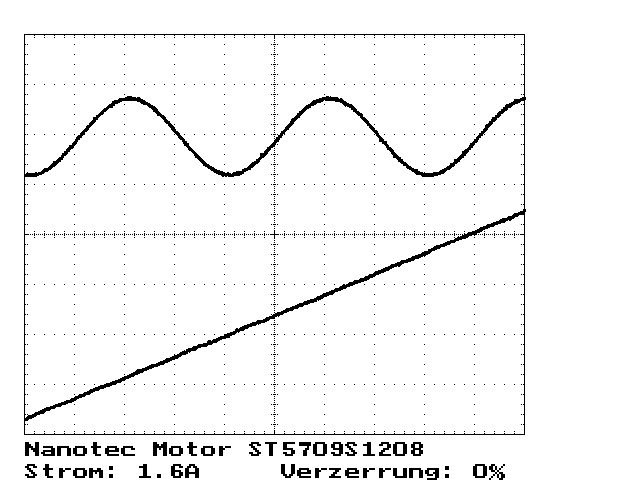 |
Nanotec
ST5709S1208 Motor
Mikroschritt Motorstrom:
1.60A
Der
Motor läuft sehr ruhig und gleichmäßig.
Nanotec
ST5709S1208 Motor
Coil
current: 1.60A
This motor runs very silent and smooth. |
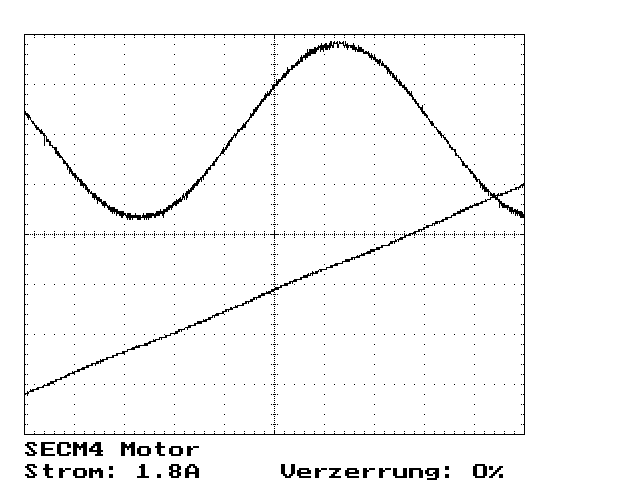 |
SECM4
Motor
Mikroschritt Motorstrom:
1.80A
Der
Motor läuft sehr ruhig und gleichmäßig.
SECM4
motor
Coil
current: 1.80A
This
motor runs very silent and smooth.
|
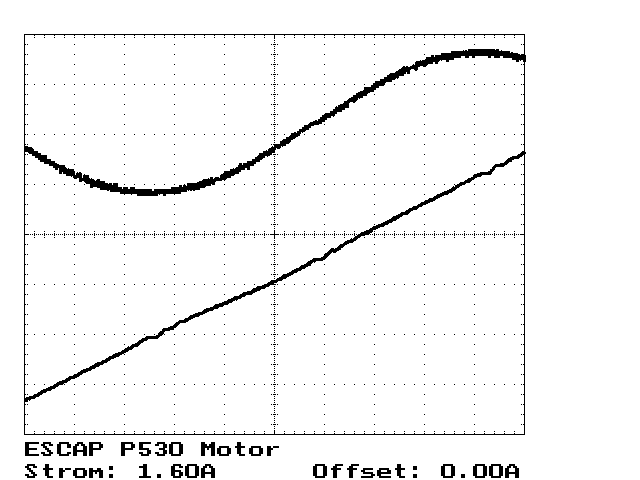 |
ESCAP
P530 Motor
Mikroschritt-Betrieb Betriebsspannung:
12V
Der
Motor läuft sehr gleichmäßig.
ESCAP
P530 Motor
Supply
Voltage: 12V
The
motor runs very smooth.
|
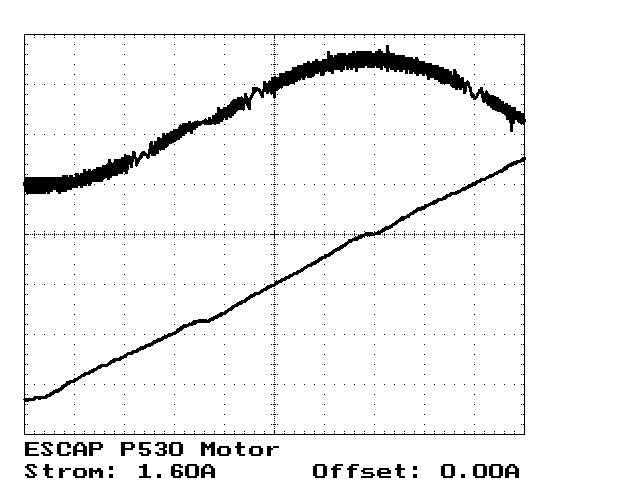 |
ESCAP
P530 Motor
Mikroschritt-Betrieb Betriebsspannung:
40V
Wegen
der hohen Betriebsspannung läuft der Motor nicht völlig gleichmäßig.
ESCAP
P530 Motor
Supply
Voltage: 40V
The
motor doesn't run absolutely smooth because of the high supply voltage.
|
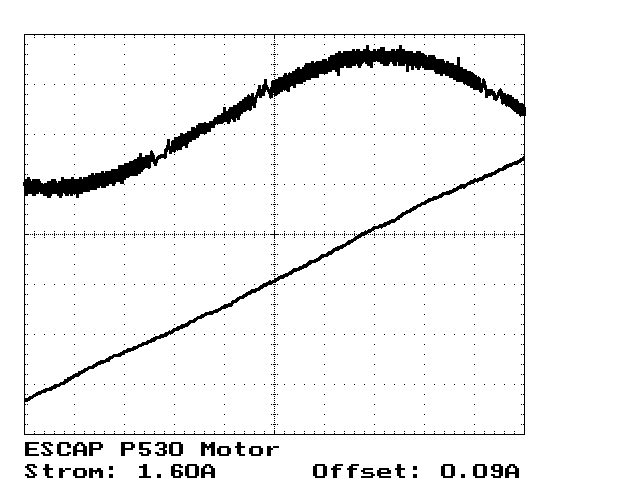 |
ESCAP
P530 Motor
Mikroschritt-Betrieb Betriebsspannung:
40V
Gegenüber
den vorigen Bild wurde nur der "Offset" Parameter von 0.00A auf 0.09A geändert.
Die kleinen Stufen in der unteren Kurve sind verschwunden und der Motor
läuft jetzt sehr gleichmäßig.
ESCAP
P530 Motor
Supply
Voltage: 40V
Same
parameters as in the last picture, except that the "offset" parameter was
changed from 0.00A to 0.09A.
|
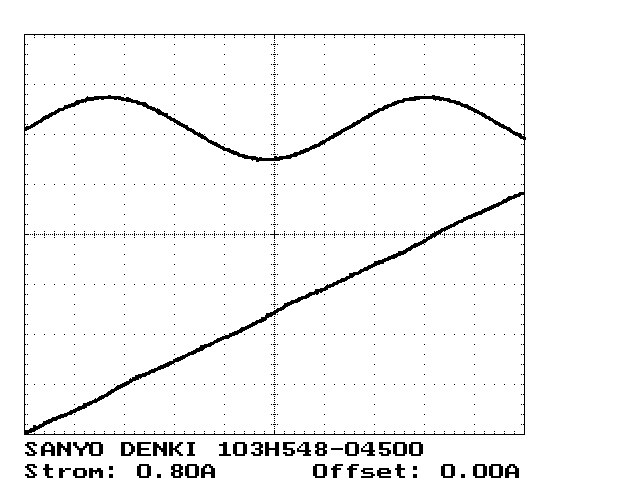 |
SANYO
DENKI 103H548-04500
Mikroschritt Motorstrom:
0.80A
Der
Motor läuft ruhig und gleichmäßig.
SANYO
DENKI 103H548-04500
Coil
current: 0.80A
This motor runs silent and smooth. |
